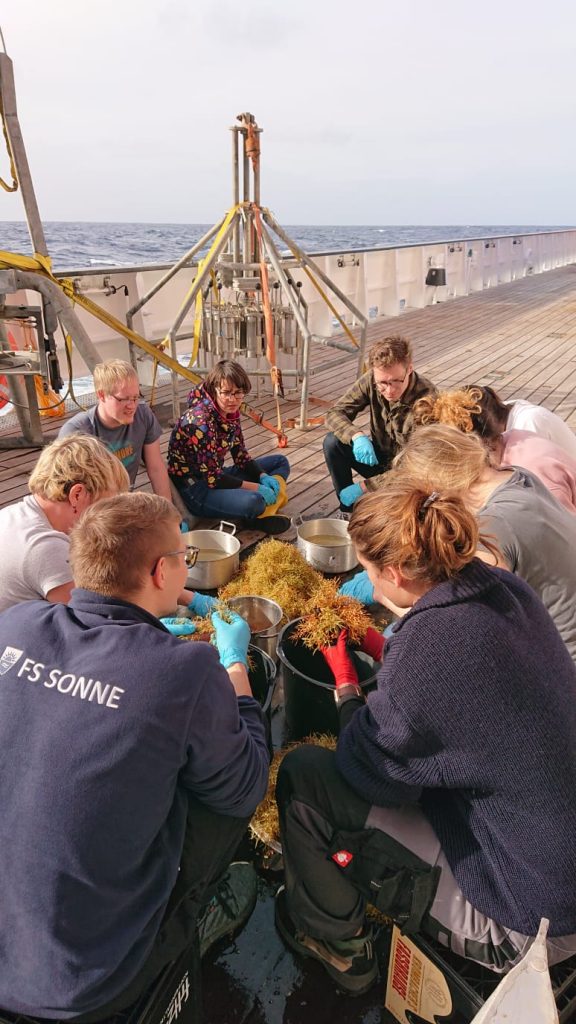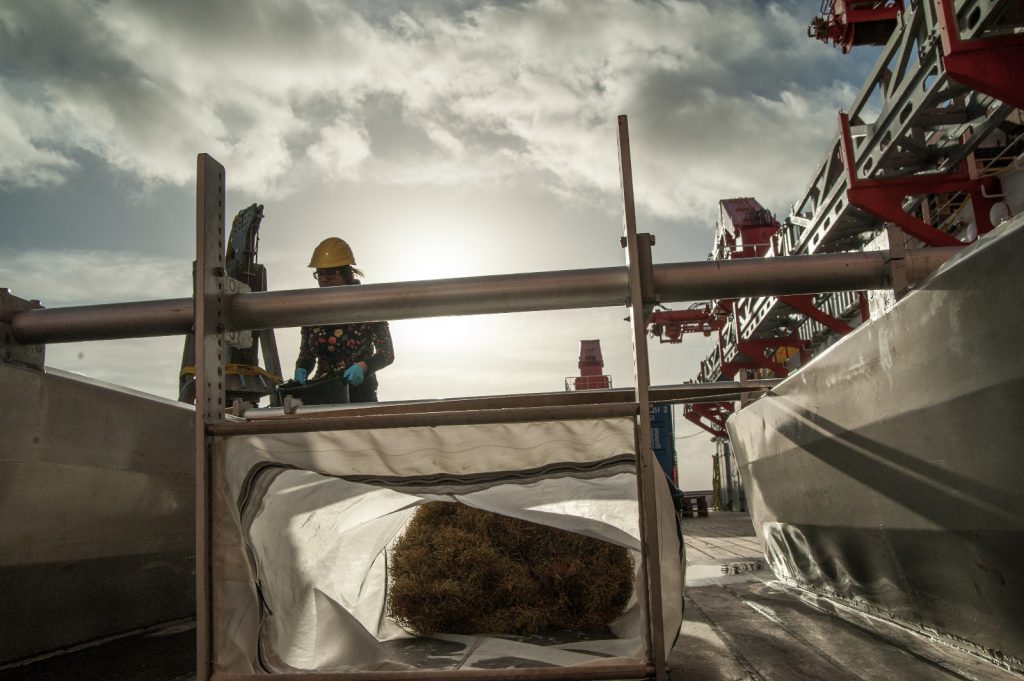
After the OFOS profile finished on 15 December, SONNE transited to Station 4. We arrived on 16 December at 4:00 in the morning and immediately began our sampling program. The box cores returned with rather strange sediments—fine grained carbonates that behaved somewhat like a non-Newtonian fluid. The sediment was soft when gently pressed or shaken, but much harder when struck suddenly. We finished our sampling on 17 December and transited to Station 5.
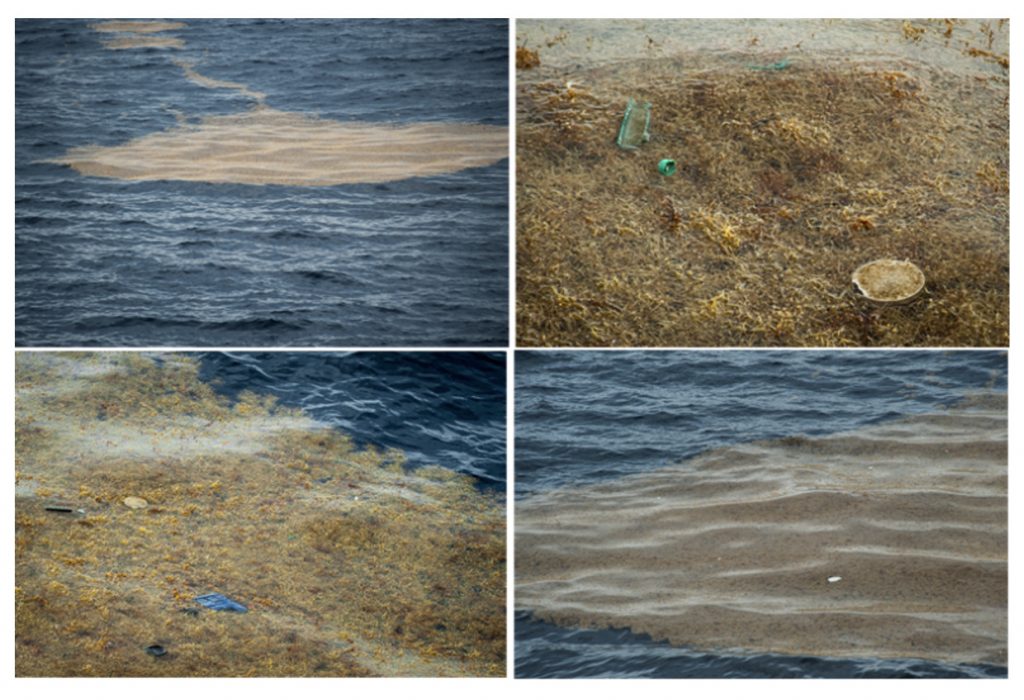
We reached Station 5 on December 18 and while on station, we observed large rafts of Sargassum at the sea surface. The floating seaweed aggregates along wind-driven lines, stretching as far as the eye can see. Floating plastic litter accumulates with the Sargassum, and within one patch we saw large pieces of plastic sheets, crates, buckets, bottle caps, and rope (Fig. 2). Perhaps this sort of macro-sized litter is the parent material of some of the microplastics we find in the catamaran trawls.
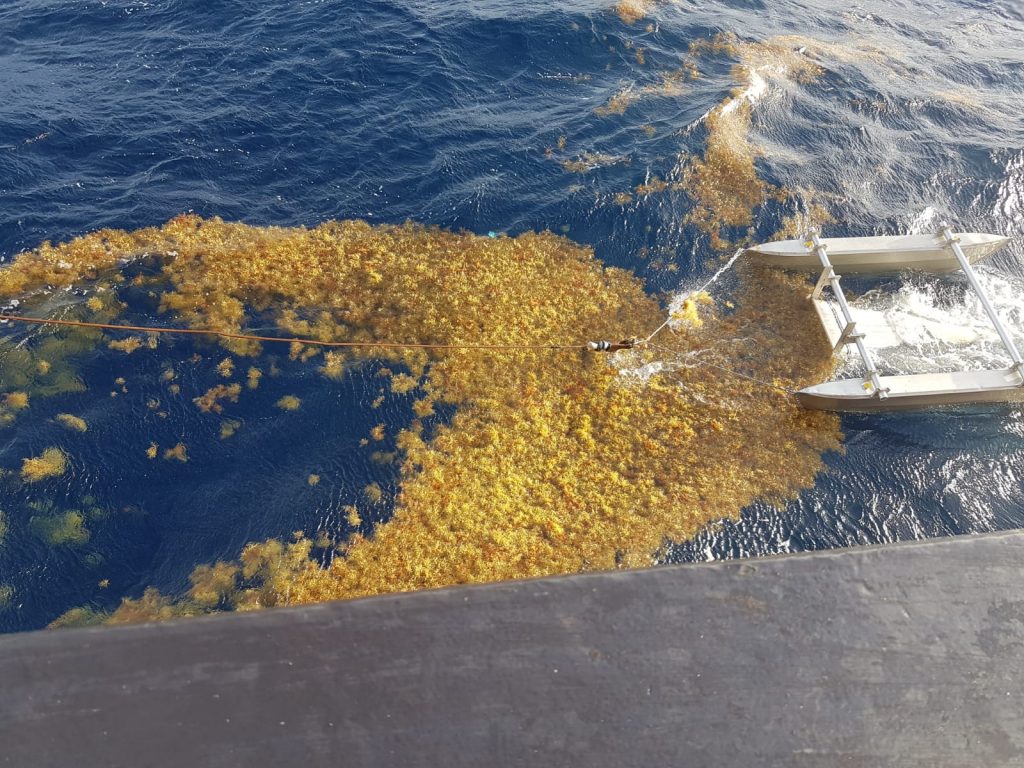
Catamaran in the water. 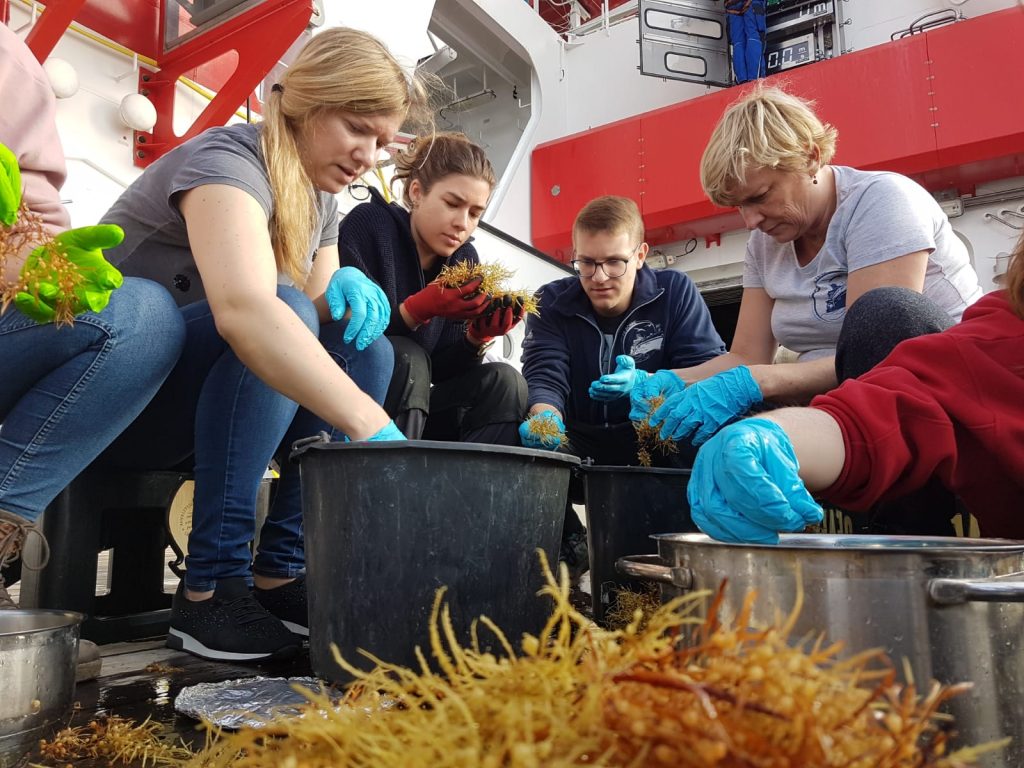
Scientists screening seaweed for plastic.
